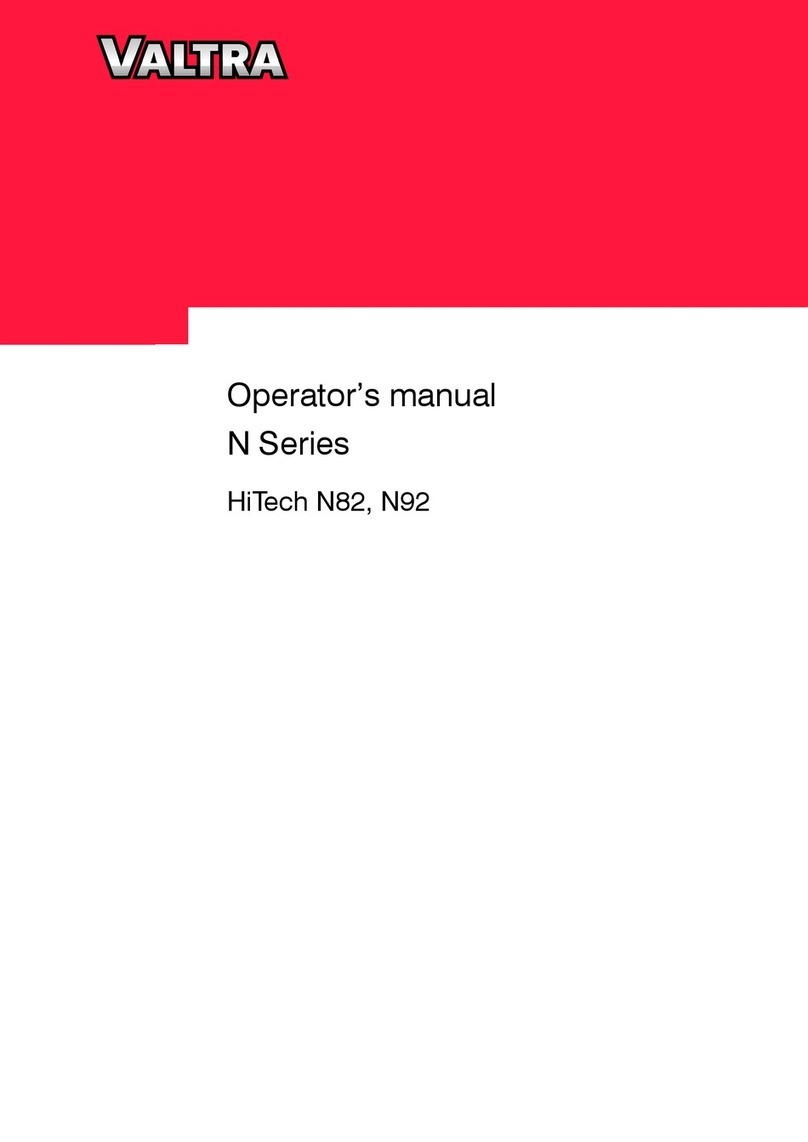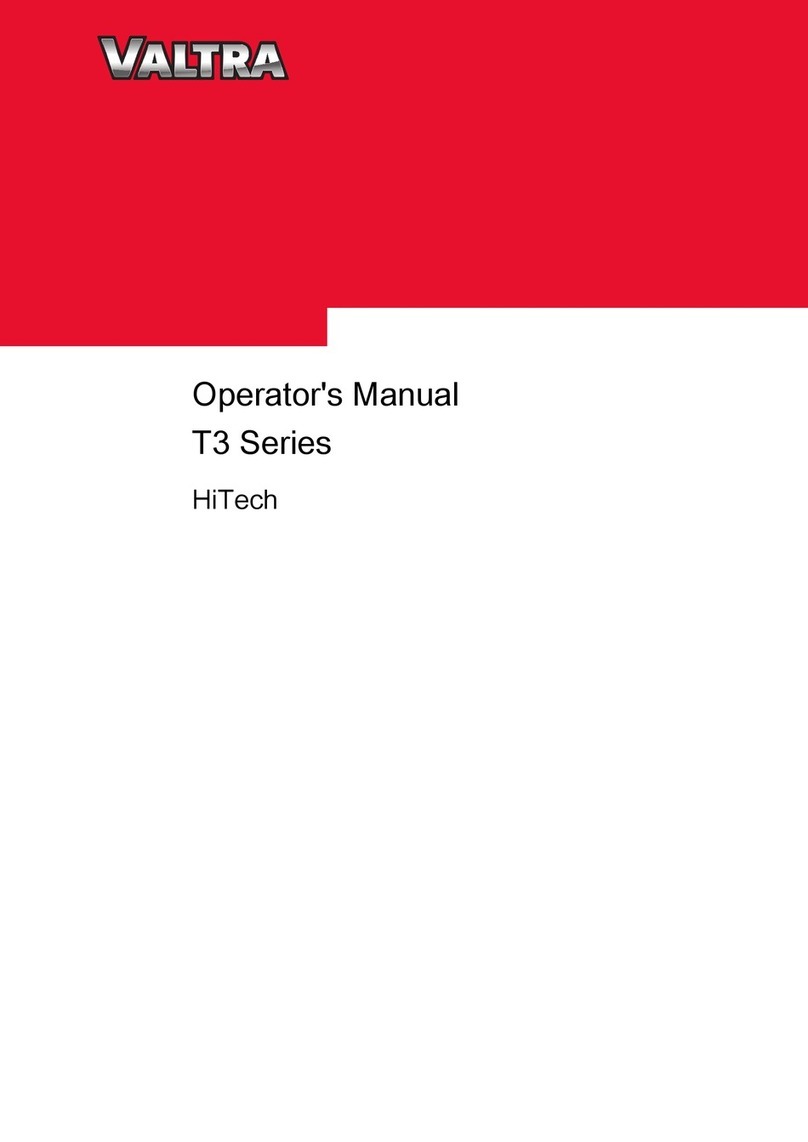
1.2 General Recommendations
Why is safety important?
1. Accidents incapacitate and can be fatal
2. Accidents generally involve significant costs
3. Accidents can be avoided.
This section of the Manual is intended to point out some of the basic safety situations involved with your
equipment and to provide suggestions on how to avoid high-risk situations and accidents. Therefore, users
must take all possible precautions and guidance. There are always a series of precautions to be taken for
each implement, attachment and work situation, which would be impossible to list in this Manual.
Valtra is in no way able to directly control the conditions of use, servicing or repair to which the product is
subjected. Therefore, users are responsible for always following appropriate practices for their safety and
for the integrity of the product, other people or machines in the same work area.
1.2.1 Safety notes
Always pay attention to the symbols below. When they appear next to text, pay special attention to the
instructions.
DANGER:
This symbol indicates an imminently hazardous situation that, if not avoided, will result in
death or serious injury.
WARNING:
This symbol indicates a situation of potential danger that, if not avoided, may result in
death or serious injury.
CAUTION:
This symbol indicates a situation of potential danger that, if not avoided, may result in
minor or moderate injury.
IMPORTANT: This symbol identifies specific instructions or procedures that, if not strictly observed, may
result in damage to or destruction of the machine, the operating process or even objects that are close to
it.
NOTE: This symbol indicates additional information about a matter or procedure that will make the
operation or repair more appropriate or ecient.
1.2.2 Note to the operator
It is your responsibility to read and understand the safety section of this Manual before operating the
machine. You must follow the safety instructions that will guide you, step by step, throughout your working
day.
Remember that you play a crucial part in ensuring that operation of the machine is safe. Good safety
practices not only protect you, but also the people around you. Carefully read the safety practices
contained in this Manual and include them in your safety program.
Remember that this safety section was prepared especially for this machine. Follow all usual and
customary safety precautions and, above all, remember that your safety depends on you. You can prevent
accidents.
GUID-CCE14823-A430-4901-AF17-8B3FAF4C24CB [V2]
GUID-5107E002-6CBB-4726-9405-31B6295D984D [V1]
GUID-79E5AF69-71F1-4989-AAE1-7FAB77773D8B [V2]
1. Security
1-4 HiTech
ACW3452230
Find manuals at https://best-manuals.com





























